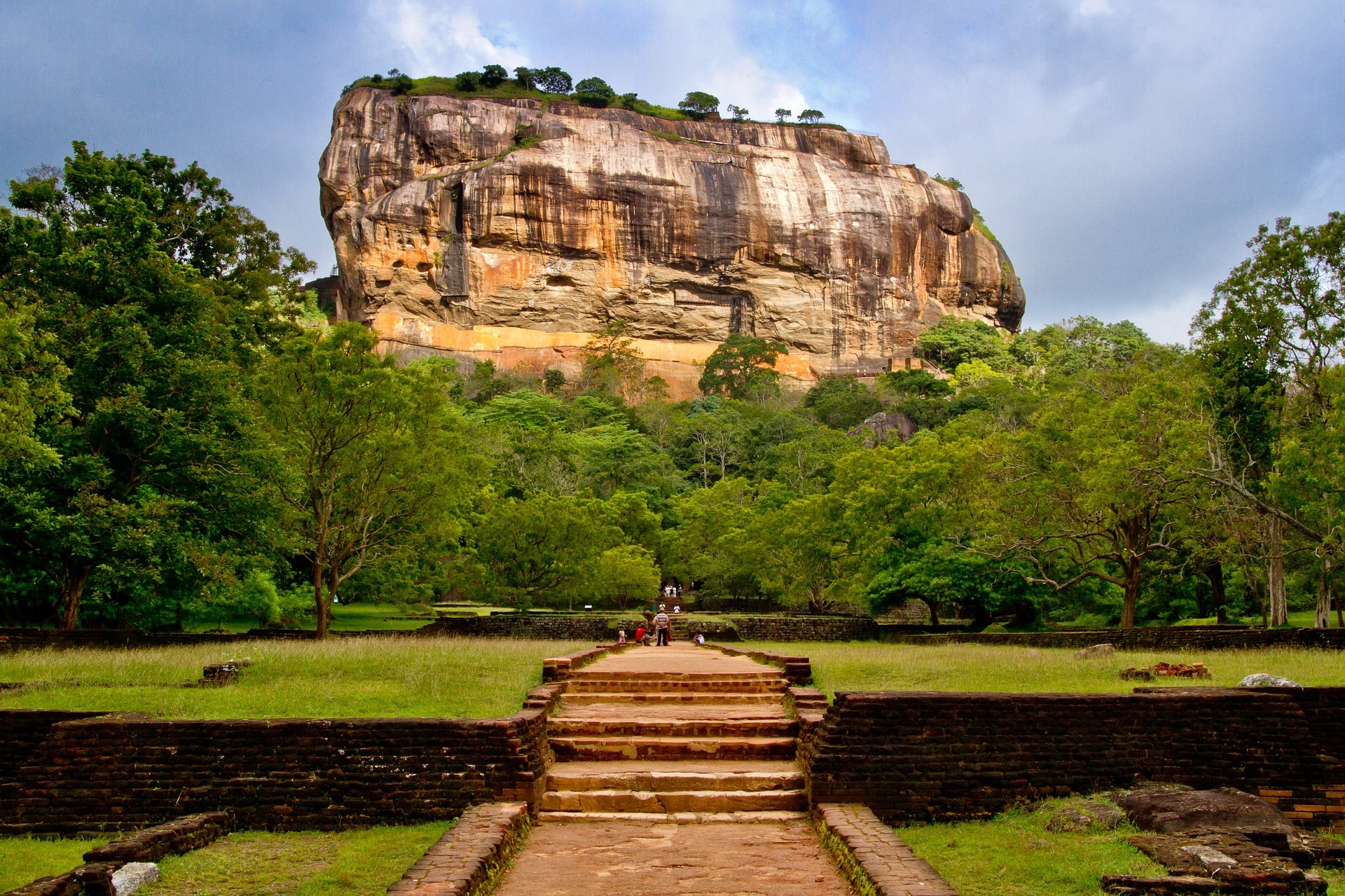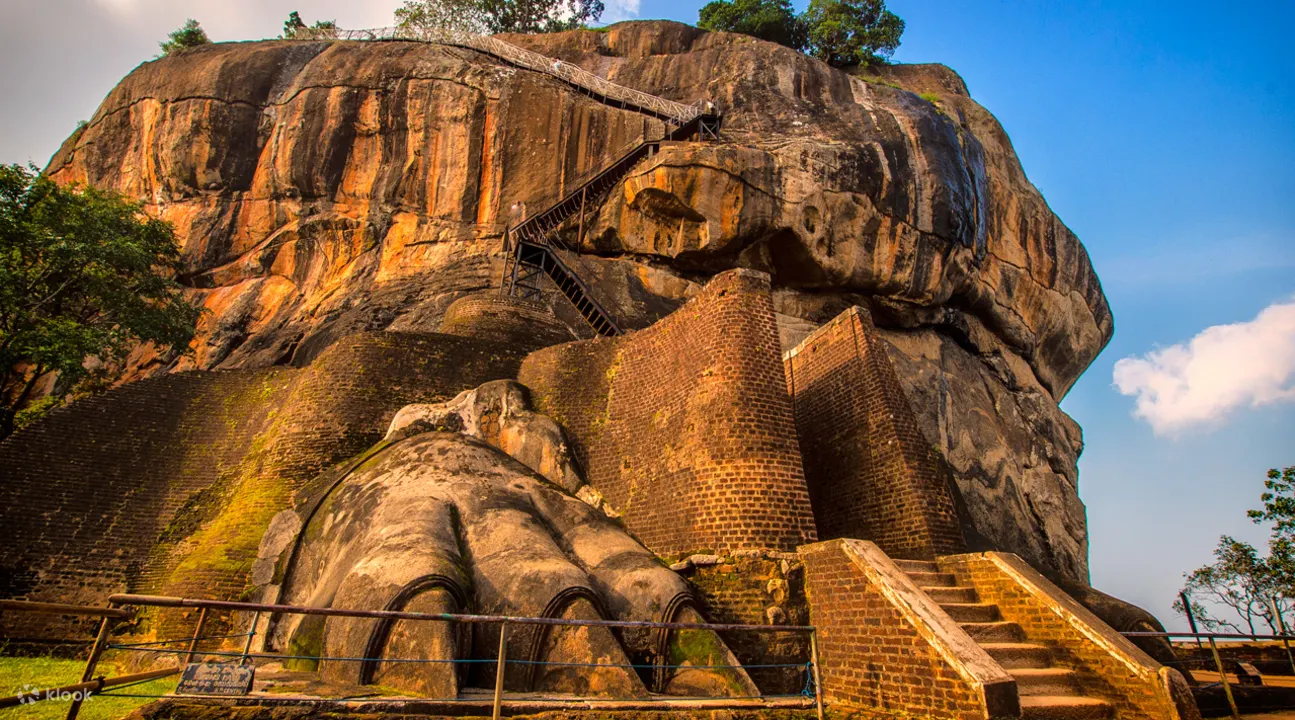Welcome to the enchanting world of Sigiriya Rock, Sri Lanka – a mesmerizing blend of natural beauty and ancient history. As we embark on this journey, we’ll delve deep into the heart of Sigiriya, an iconic UNESCO World Heritage site. Prepare to be awed by the sheer grandeur of this colossal rock fortress and its rich historical significance. Join us as we unravel the mysteries and stories that have been etched into the very soul of Sigiriya Rock, Sri Lanka. Let’s step back in time and discover the secrets of this remarkable treasure!
The Sigiriya Rock: A Geological Marvel
Before delving into its historical significance, it’s essential to appreciate the geological wonder that is the Sigiriya Rock. Rising abruptly from the surrounding lush jungle, Sigiriya stands at a height of 660 feet (200 meters) and dominates the landscape with its sheer vertical walls. This massive rock formation is actually the solidified magma plug of an ancient volcano, and its unique shape makes it one of the most distinctive landmarks in Sri Lanka.
 Also read – Explore Agra Fort: A Journey Through History
Also read – Explore Agra Fort: A Journey Through History
Sigiriya’s Creation and Early Inhabitants
The story of Sigiriya dates back over 2,000 years to the reign of King Kasyapa I in the 5th century AD. King Kasyapa, driven by both ambition and paranoia, chose Sigiriya as the location for his royal palace and fortress. He constructed an elaborate palace complex atop the rock, surrounded by beautiful gardens and water features.
One of the most iconic features of Sigiriya is its massive lion-shaped gateway at the base of the rock, which gave rise to its “Lion Rock” nickname. Unfortunately, the lion’s head and forelimbs have since eroded away, leaving only the massive paws to greet visitors as they ascend the rock.
The Frescoes of Sigiriya
As we make our way up Sigiriya Rock, we encounter one of its most captivating features: the frescoes. These vibrant and beautifully preserved paintings adorn a sheltered pocket of the rock face, known as the Sigiriya Frescoes. The frescoes depict 21 slender and graceful female figures, believed to be celestial nymphs or heavenly beings. Their presence adds an ethereal quality to Sigiriya and serves as a testament to the artistic prowess of the time.
Architectural Marvels
The summit of Sigiriya Rock reveals the remnants of the ancient palace complex, showcasing remarkable engineering and architectural feats. The Palace on the Summit is believed to have been a luxurious retreat for King Kasyapa, complete with terraced gardens, pools, and pavilions. The precise layout of the complex, the advanced hydraulic systems that transported water to the summit, and the ingenuity behind its construction continue to astonish historians and archaeologists.

Also read – Explore Deeg Jal Mahal: Unveiling the Hidden History and Grandeur
Also read – Explore Sajjangarh Palace in Udaipur and Uncover Its Enchanting History
The Mirror Wall
Another intriguing aspect of Sigiriya is the Mirror Wall, a highly polished rock surface that was once covered in a reflective plaster. Visitors to the rock, including ancient pilgrims and travelers, left inscriptions and graffiti on the Mirror Wall, offering valuable insights into the historical and cultural significance of Sigiriya. Many of these inscriptions are poetic verses praising the beauty of the frescoes and the surroundings.
The Enigmatic Sigiriya Gardens
Descending from the summit, we arrive at the meticulously landscaped Sigiriya Gardens. These gardens, known as “Sigiriya Gardens of Pleasure,” are a stunning example of ancient Sri Lankan horticultural prowess. They consist of terraced gardens with symmetrically laid-out pools, fountains, and pathways. The advanced irrigation system employed in these gardens highlights the technological advancements of the time.
The Historical Significance
Beyond its physical beauty, Sigiriya Rock is deeply steeped in historical significance. King Kasyapa’s decision to build his palace here was not just a matter of luxury but also a strategic one. Situated atop a towering rock, the palace offered a commanding view of the surrounding landscape, providing a formidable advantage in times of conflict. Sigiriya was both a royal residence and a military fortress.
The Downfall of King Kasyapa
Despite the grandeur of Sigiriya, King Kasyapa’s rule was marked by controversy and intrigue. His ascent to the throne was marred by a patricidal act; he overthrew and subsequently murdered his father, King Dhatusena, to secure his position. The construction of Sigiriya and the forced labor it entailed did not endear him to the populace.

In 495 AD, King Kasyapa’s reign met a tragic end when he faced defeat at the hands of his half-brother, Prince Mugalan, who aligned with the rightful heir to the throne. King Kasyapa is said to have taken his own life on the battlefield, bringing his tumultuous reign and the era of Sigiriya to an end.
Also read – Exploring Taragarh Fort in Bundi: A Journey Through History
Also read – Explore The Six Beautifull Hill Forts of Rajasthan
Legacy and UNESCO World Heritage Status
Despite its turbulent history, Sigiriya has left an enduring legacy. It stands as a testament to ancient Sri Lankan civilization’s architectural and engineering prowess. In 1982, Sigiriya was designated a UNESCO World Heritage Site, recognizing its cultural significance and the need for its preservation.
Visiting Sigiriya Today
Sri Lanka’s Sigiriya remains a prominent magnet for global tourists, enticing travelers from various corners of the globe. Ascending to its peak, despite its demanding and steep nature, promises awe-inspiring, sweeping vistas of the picturesque landscape, providing a gratifying adventure for both thrill-seekers and history aficionados. Exploring the immaculately preserved gardens and admiring the ancient frescoes embellishing the rock also captivates visitors.
Also read – Top 10 Trending Destinations in 2024 – Where to Travel
Conclusion
Sigiriya Rock in Sri Lanka is not just a geological marvel but a historical treasure trove that sheds light on the ingenuity and ambitions of the ancient civilizations that once thrived on the island. From its impressive architecture to its enchanting frescoes, Sigiriya is a testament to the enduring legacy of Sri Lanka’s rich history. As you stand atop this ancient rock, you can’t help but feel a profound connection to the past, making Sigiriya an essential destination for anyone seeking to explore the cultural heritage of Sri Lanka.











